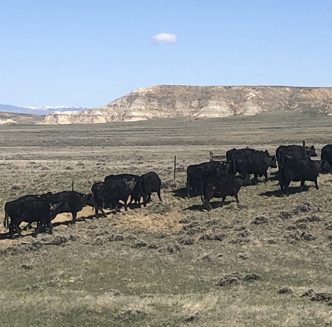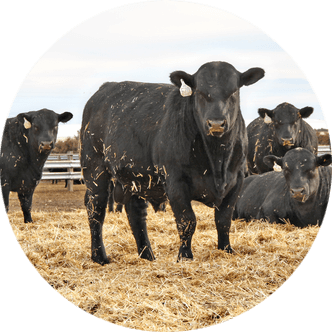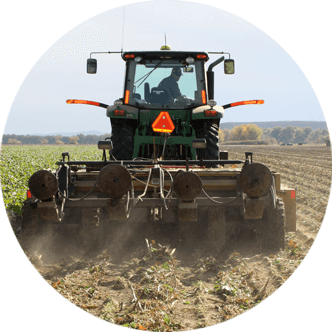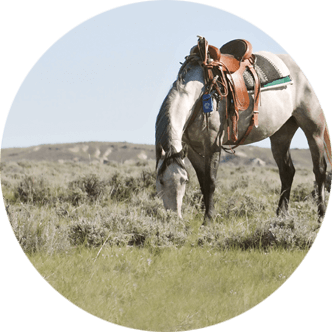Are groundwater easements a solution for the West?
The second of the 2025 Water Webinar series focused on a timely and crucial discussion about groundwater conservation and its role in addressing the West’s growing water scarcity challenges.
The panel, featuring Sarah Parmar from Colorado Open Lands (COL), Dr. Ladona Clayton from the Ogallala Land and Water Conservancy (OLWC) and Erin Minks from U.S. Sen. Michael Bennet’s (D-CO) office, discussed the effectiveness and structure of groundwater conservation programs and easements.
The three explained how these programs may be effective for providing relief to declining aquifers, such as the Ogallala in New Mexico and the San Luis Valley of southern Colorado, and what it takes to implement them, both at the local and legislative levels.
The state of groundwater in the West
Parmar began the webinar by explaining the San Luis Valley’s agricultural success, which heavily relies on groundwater pumping, has led to a serious depletion of the underlying aquifers and a decline in the collective resource.
As technology for groundwater pumping has improved, water extraction from the aquifers began to outpace the natural recharge rate, resulting in a sharp decline in groundwater levels.
Parmar highlighted the challenges faced by landowners and farmers in the valley, where the agricultural economy is deeply tied to groundwater availability. Despite efforts to reduce water consumption through voluntary programs, the need for a more permanent solution became clear.
Community-led initiatives, such as the establishment of groundwater management subdistricts, allowed local stakeholders to tackle the problem collectively. Landowners elected to create a tax on water withdrawals which is used to fund groundwater banks that would pay landowners interested in retiring their wells and create an immediate financial incentive for landowners to reduce their water use.
However, Parmar noted these solutions were difficult and expensive to implement and fell short of achieving sustainable groundwater levels. Recognition of this led to the development of a groundbreaking idea – groundwater conservation easements.
To the south, in eastern New Mexico, the Ogallala Aquifer has been depleted by an average of approximately 16 feet since predevelopment, resulting in a water crisis. Water use in the region is primarily agricultural, with 95 percent of the water being used for farming.
Clayton described how OLWC partnered with the Department of Defense (DOD) to develop a voluntary groundwater lease program for irrigators, resulting in the savings of almost four billion gallons annually.
DOD’s involvement was critical because of their interest in water security for Cannon Air Force Base, which is completely reliant on water from the Ogallala Aquifer.
A new approach
Minks then delved into how Bennet and other stakeholders recognized the potential value of adding groundwater conservation easements as an eligible category under the Agricultural Conservation Easement program at the U.S. Department of Agriculture’s Natural Resources Conservation Service.
In 2023, Bennet introduced the Voluntary Groundwater Conservation Act, which aims to provide federal support for these innovative programs, while ensuring the voluntary nature of the easements remains intact.
The development of a federal framework is a complicated process because water rights are state-specific and the bill aims to ensure water rights remain with the landowners and do not transfer to the easement holder, even though the landowner’s consumptive use may be reduced.
Minks noted, while the concept of groundwater easements has gained traction, there’s still work to be done to ensure these agreements are understood and respected by all parties involved, particularly in the context of how water rights are handled.
Parmar then discussed how COL explored traditional land conservation tools to address groundwater depletion and also explained, while traditional land conservation easements focus on preventing land development or preserving open space, groundwater easements take a different approach by directly addressing water usage, specifically preventing over-allocation of aquifers.
Groundwater easements can allow landowners to voluntarily reduce their groundwater withdrawals in exchange for compensation, providing a more flexible solution which doesn’t require producers to stop farming altogether.
Instead of fully fallowing their land, groundwater easements enable producers to continue agricultural operations while reducing their water use over time. This flexibility is key to maintaining the long-term viability of both the aquifer and the local agricultural economy.
By tailoring each easement to the specific needs of the landowner and the unique characteristics of their land, they can balance the necessity for water conservation with the ongoing productivity of the land.
Parmar emphasized this model empowers landowners to find practical ways to achieve water savings, whether through methods like crop rotation, deficit irrigation or shifting to lower-water-use crops, while keeping operations running.
Valuation and compensation
An additional complication of groundwater easement programs is developing a value for the conserved water.
As the conversation shifted to compensation models, Clayton explained the innovative valuation model used by OLWC to determine fair compensation for landowners. The model considers water usage, crop valuation and income impacts from transitioning to more sustainable practices.
This ensures landowners are fairly compensated while contributing to the long-term conservation of the aquifer.
Clayton also highlighted the key role DOD played in this process. Through a partnership with OLWC, DOD provided crucial funding and support via the Readiness and Environmental Protection Integration program.
This partnership is essential not only for conserving water but also for ensuring the continued water security needed by critical military operations, such as those at Cannon Air Force Base.
Together, OLWC and DOD have been able to craft agreements benefiting both agricultural producers and national defense interests.
The path forward
The webinar wrapped up with a forward-looking conversation about the potential for groundwater conservation easements to be used as a tool for addressing water scarcity across the West.
Parmar emphasized the importance of leveraging existing programs, like those promoting soil health and water retention, alongside groundwater easements to maximize water conservation efforts while minimizing the unintended consequences of practices like full field fallowing.
By stacking these tools, producers can continue agricultural operations, maintain soil health and support the long-term sustainability of water resources.
Clayton spoke about how OLWC is using groundwater leases to conserve the Ogallala Aquifer while empowering producers to adopt regenerative agriculture practices. These practices are essential for maintaining soil health, water holding capacity and resilience in the face of increasing climate variability.
Minks closed by discussing how the new legislative session and future farm bill discussions could provide opportunities for expanding groundwater conservation legislation.
Despite the challenges, there is hope these innovative solutions will continue to gain traction at both the state and federal levels.
Morgan Wagoner is the Western Water Program director for the Western Landowners Alliance (WLA), where she oversees the development and execution of strategies and policies to facilitate collaborative learning and action to address Western water issues. This article was originally published by WLA on Feb. 25.





